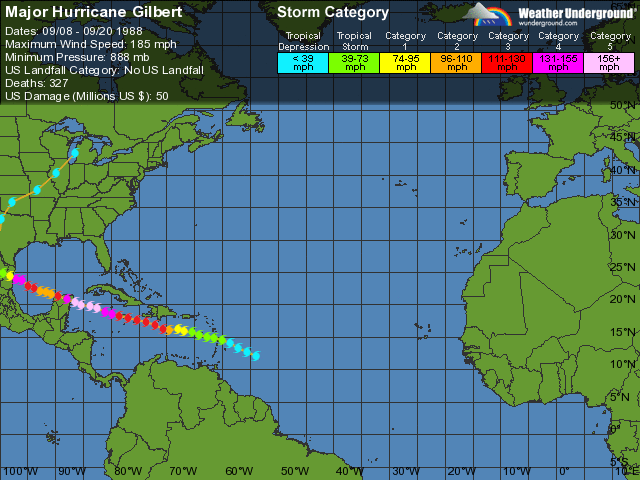
Jamaican Dry Forests
Jamaican dry forests have been negatively impacted since the arrival of the Amerindians to the Caribbean approximately 6,000-7,000 years ago; however, environmental degredation has worsened considerably since the arrival of the Europeans in the 1490s.
The foremost threat is habitat destruction, resulting from a combination of agricultural practices (clear-cutting, slash and burn agriculture), commercial development, invasive species, urban tourism, and overexploitation of natural resources. In agricultural practices, fire is often used to clear land and the understories of forests for crop planting and settlement projects. As much of the vegetation in Jamaica is not fire-adapted, the deliberate use of fires to clear forested land —sometimes in forests reserves— results in a loss of endemic trees and fauna. These species are then replaced by permanent grasslands that grow in the dry periods suceeding a fire. The introduction of invasive aliens—goats, feral cats, pigs, and rats—is another major threat to endemic species in Jamaica. In fact, these invasive species account for over half of all animal extinctions on islands worldwide (IUCN). The invasive species have become so problematic that the Jamaican government has created a National Biodiversity Strategy Action Plan, outlining 45 specific goals to manage and maintain them (CEPF).
In addition to habitat destruction, one of largest threats to Jamaica’s dry tropical forests is the expansion of human population and eco-tourism into remote areas. Two of Jamaica’s key biodiversity hotspots and protected forest reserves—Blue Mountain Peak in the Blue Mountains and John Crow Mountains National Park—are experiencing increasing levels of floral and faunal disturbance each year due to the dramatic influx of visitors (CEPF). The deforestation necessary for housing development and tourist destinations causes massive soil erosion. Water-courses leading from the mountains become heavily laden with sediment and water flows decrease and become more erratic as such. This results in water shortages and/or floods at lower altitudes. Until recently, interior forests were very inaccessible, however, continued road construction into these areas will inevitably lead to increased deforestation and selective cutting. (WWF Island of Jamaica and Caribbean)The Blue Mountains are simultaneously threatened by the expansion of coffee plantations, known to negatively affect the health and number of native tree and bird populations (CEPF). More generally, this agricultural expansion- specifically pesticide and fertilizer pollution- can cause soil erosion, threatening the livelihood of endemic species in the region.
The threat of hurricanes and climate change make adaptation difficult for those species already considered endangered. In 1988, Hurricane Gilbert hit Jamaica, causing 43 percent of trees in the John Crow mountains to topple and/or break at the crown (Varty 1991, Bellingham et al. 1992). A comprable amount of trees broke in the Blue Mountains. Hurricanes are detrimental to Jamaica’s dry tropical forests in that they induce excessive rainfall, as well as landslides and flash-flooding. And given that hurricanes will intensify in the face of global climate change, this problem is only becoming more threatening.
Jamaica is further threatened by hunting. Conducted primarily for food or recreation, illegal hunting often occurs in protected areas. Endangered animals, as well as rare or medicinal mushrooms, eggs, saps, etc. found in these protected areas have a decreased survival rate because they are the primary targets.
Mining is another serious threat to Jamaica’s forests. Jamaica is ranked third in the world in Bauxite production; it is estimated that Bauxite mineral deposits underlie 1/4 of the island (CEPF). This aluminum ore accounts for a large percentage of the country's GDP. Despite the obvious economic value of mining operations, they leave the surrounding forests uninhabitable: the forests experience air pollution from bauxite and alumina dust, as well as soil and water pollution. Significant areas have been lost in central, native regions of the county (CEPF).
Finally, development and economic projects have become of major concern for Jamaica’s dry tropical forests. This is best evidenced by Cockpit Country and the Goat Islands. Cockpit County, the largest remaining area of wet limestone forest in Jamaica, has been recently approved as a mining expansion project. As was aforementioned, said projects will lead to environmental degradation (CEPF). In a similar vein, the China Harbour Engineering Company is beginning to construct a trans-shipping port on the Goat Islands. These islands are home to protective reefs that serve as buffers against waves on the coastline (Jamaica Observer). Constructing a port will cause devastating environmental impacts for both endemic flora and fauna on the coastal dry forests of the Portland Bight Protected Area in that the area would experience an increase in pollution and coastal dredging (Anole Annals).
Sources:
http://www.cepf.net/where_we_work/regions/caribbeanislands/ecosystem_profile/pages/threats.aspx
http://www.anoleannals.org/2013/12/29/jamaica-a-land-of-imperiled-nature-theats-to-jamaicas-coastal-ecosystems-due-to-proposed-development-of-the-goat-islands/
http://www.jamaicaobserver.com/news/10-000-jobs-from-Goat-Islands-port




Cockpit Country; Threatened by mining expansion
Goat Island; Recently established as a shipping port

Blue Mountains